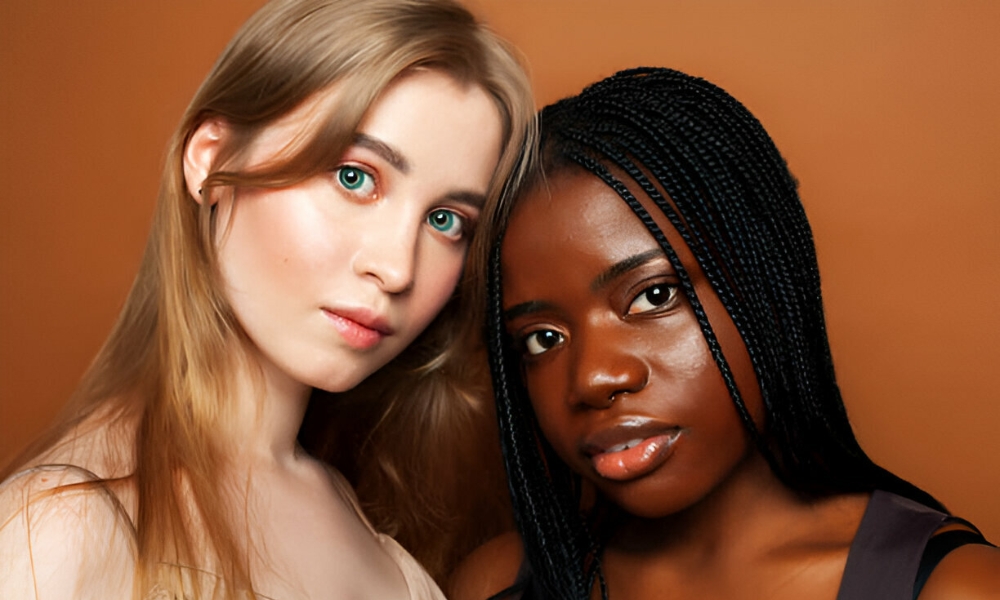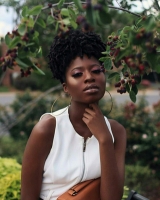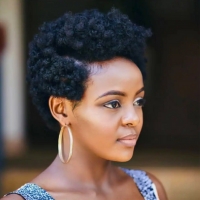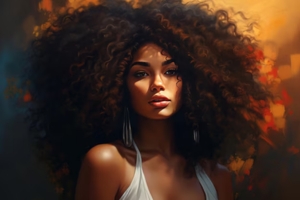
4-minute read
I’ve spent a lot of time thinking about beauty—what it means, who gets to define it, and whether it’s really as inclusive as we like to think. And the more I look at it, the more I realize that Beauty or Bias Western beauty standards aren’t just about what’s considered attractive; they’re about power, control, and exclusion.
As a Black woman, I’ve seen firsthand how these standards work—how they shape the way we see ourselves and each other. So, I want to share three truths I’ve discovered about the impact of Western beauty ideals on Black women. Because the reality is, beauty has never been neutral.

There’s a memory from my childhood that I can’t seem to shake. When my dad worked at an art printing factory, he’d bring home all sorts of prints—stunning images tucked away in a cupboard. One of them was a massive picture of Marilyn Monroe. I used to pull it out and just stare, completely mesmerised by her beauty. At around eight or nine years old, I saw her as the ultimate symbol of glamour.
But when I think back, I can’t remember ever admiring a Black woman in the same way at that age. Not because Black beauty wasn’t there—but because it wasn’t presented to me in the same way.
That’s the thing about Western beauty ideals. They don’t just elevate a certain type of beauty—they erase others. For decades, they’ve pushed a very specific look: lighter skin, straight hair, Eurocentric features. And while this has obviously been used to marginalise women of colour, it’s also been a way to control White women who don’t fit the mold. It’s a hierarchy, and only a select few get to sit at the top.
Once I realised that beauty standards weren’t just about personal preference but about a system of exclusion, I started to question everything. While I’ve never personally felt the need to hide most of my features (apart from my hair, which always seemed to be up for debate), I know many Black women have. Whether it’s relaxing curls, contouring noses, or toning down full lips, so many of us have been made to feel like we need to adjust ourselves just to be seen as beautiful.

Let’s talk about the cost of trying to fit into an ideal that wasn’t designed for us. And I don’t just mean the financial cost (though let’s be real, that’s a big one). I mean the emotional and physical energy it takes to constantly manage how we present ourselves.
Black women have been speaking up more and more about the “natural hair tax”—the extra time, effort, and money it takes to style our hair in ways that are considered “acceptable.” And that’s just one example. Whether it’s spending hours on hair treatments, choosing makeup shades that “soften” our features, or feeling like we need to look polished at all times just to be taken seriously, the pressure is relentless.
And for what? To meet a beauty standard that keeps moving the goalpost?
Over time, I’ve found that external pressures weigh on me less than they used to. Maybe it’s age, maybe it’s experience, but I just don’t have the energy to fight battles that I didn’t sign up for. That said, I know this isn’t the case for everyone. The reality is, not everyone has the privilege of not caring. For many Black women, especially in certain workplaces or industries, the pressure to conform is real. The fight to be seen as “presentable” can be exhausting. And it’s not just frustrating—it’s unfair.

One of the biggest revelations I’ve had is that beauty isn’t just something we see. Beauty or Bias has shaped our perceptions in ways we don’t even realize.
I’ll never forget a moment from my early days working at Selfridges in London. I was serving an African woman, and her features—her large, flat nose, her bold structure—reminded me of the Benin bronzes I’d seen in museums. And in that moment, I saw the beauty in them. The beauty that had always been there. But the fact that I was only just seeing it for what it was? That shook me.
It made me realise how much my eyes had been trained to see beauty through a Western lens. That unless Black features were softened, slimmed down, or Eurocentrically “refined,” they weren’t considered desirable.
That was the moment I knew—learning to see Black beauty isn’t just about unlearning biases against others, it’s about unlearning the ones we’ve absorbed ourselves.
These three truths have shaped the way I think about beauty and bias. Western beauty ideals weren’t designed to include us, and yet, for so long, we’ve been made to feel like we have to measure ourselves against them.
But here’s the thing—we don’t.
We don’t have to shrink ourselves, change ourselves, or spend our energy trying to meet an impossible standard. We can reclaim our beauty, not just by rejecting these ideals, but by redefining what beauty means on our own terms.
Every day, I try to unlearn the biases I’ve picked up. To remind myself that beauty isn’t just what we’ve been told it is. And if you’ve ever questioned your own beauty because of these outdated, narrow ideals—let this be your reminder: there is nothing to fix. You were never the problem.
Let’s rewrite the rules. Let’s reclaim the definition of beauty. And let’s make sure Beauty or Bias doesn’t decide who gets to be seen.
Thanks for reading! Have you ever caught yourself seeing beauty through a Western lens? Let’s talk—drop your thoughts below.
4-minute read Have you ever found yourself lying awake at night, heart heavy with worry about your teenager’s safety during interactions with the police? It’s a question that lingers for many parents and caregivers, especially when history and statistics both
4-minute read Let’s be honest—the Hidden Agenda Behind Beauty Ads is everywhere. They follow us on our phones, pop up in our social feeds, and even sneak their way into our subconscious when we least expect it. One minute you’re
4-minute read Have you ever found yourself stressing over every single pound while worrying about how to teach your kids the value of money? It’s a reality for many families, and let’s be honest—it’s not always easy. Despite the struggle,